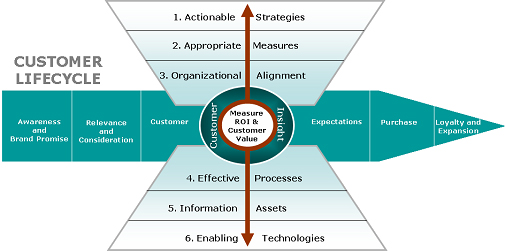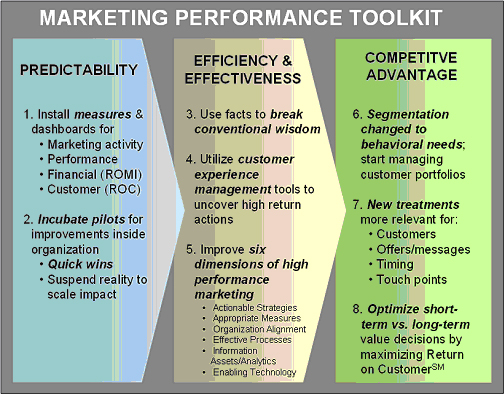 Welcome to the first of a monthly series by Lane Michel, executive vice president/managing director of the Marketing Performance Management business unit of Quaero Corp.
Welcome to the first of a monthly series by Lane Michel, executive vice president/managing director of the Marketing Performance Management business unit of Quaero Corp.
Tired of the CFO hammering the marketing department because it’s an easy cost reduction for this quarter’s shortfalls? Frustrated with all the hype about the marketing and CRM systems that are going to put your organization on the rod to “ROMI”? Yet still somehow exhilarated and hopeful that the power, insight, and value that marketing can create for your company and its customers is on the verge of that promised breakthrough?
The focus for marketing executives has shifted to marketing performance management (MPM). The search for talent, answers, the right tools, and especially positive customer responses has moved into high gear. Unfortunately, the marketing “vehicle” still isn’t moving anywhere. Why? Because someone still has his foot on your brake, blocks around your wheels, the hood up telling you to replace your engine, no steering wheel to direct the vehicle, and by the way, foggy windows with no mirrors to see what’s happening around you. But other than that, the hype is in high gear, and the engine is making a lot of noise.
To put it another way, the CFO traffic cop is forced to keep directing you into the lane of short-term thinking and cost reductions.
•  Managing marketing performance is all about creating a customer- and data-driven discipline in your organization, enabled with the right tools and information when needed, measured in such a way that every one in the marketing organization who makes decisions gets immediate feedback as to whether their decisions created or destroyed customer value, and generated or reduced return on marketing investment
Managing marketing performance is all about creating a customer- and data-driven discipline in your organization, enabled with the right tools and information when needed, measured in such a way that every one in the marketing organization who makes decisions gets immediate feedback as to whether their decisions created or destroyed customer value, and generated or reduced return on marketing investment
There is a simple model for taking the new focus on marketing performance management into action and not just wasting words or a playing a guessing game. It has three basic components:
1. Customer insight derived from individual customers’ needs and experiences. 2. Six dimensions of marketing capabilities: actionable strategies, appropriate measures, organization alignment, effective processes, information assets, and enabling technologies. 3. Measurement of both return on marketing investment (ROMI) and Return on CustomerSM (ROC)
 There has been enough learning in pursuing CRM, campaign management, and marketing automation during the past 10 years that now there is an equally simple formula for making a dramatic shift in the performance of your marketing organization over a period of about 18-36 months. This is the CMO’s ultimate toolkit. Not hollow promises. Not overset expectations. Just the reality of how the best marketing organizations are transforming all the rhetoric into action and results for their customers and companies.
There has been enough learning in pursuing CRM, campaign management, and marketing automation during the past 10 years that now there is an equally simple formula for making a dramatic shift in the performance of your marketing organization over a period of about 18-36 months. This is the CMO’s ultimate toolkit. Not hollow promises. Not overset expectations. Just the reality of how the best marketing organizations are transforming all the rhetoric into action and results for their customers and companies.
The ultimate CMO toolkit for MPM contains strategies and tactics that will become the new discipline of marketing. Marketing is becoming more scientific in its approach and accountable to shareholders. Nonetheless, the creativity and art of marketing still has an important place in using imagination to better understand how to link insights on customer needs with the capability to meet those needs better than anyone else.
If you are relying on the “tried and true” seat-of-the-pants marketing to meet your commitments to your company, then start brushing off your resume. That isn’t going to get the job done and will devalue the equity of your company.
In the months ahead, I’ll be covering each of the elements of the CMO’s toolkit for MPM and share the stories of companies that are getting significant lifts in customer satisfaction, response and conversion through their focus on managing the performance of marketing.
You can reach Lane Michel at lane@quaero.com
Return on CustomerSM is a registered service mark of Peppers & Rogers Group, a Carlson Marketing Group company.



